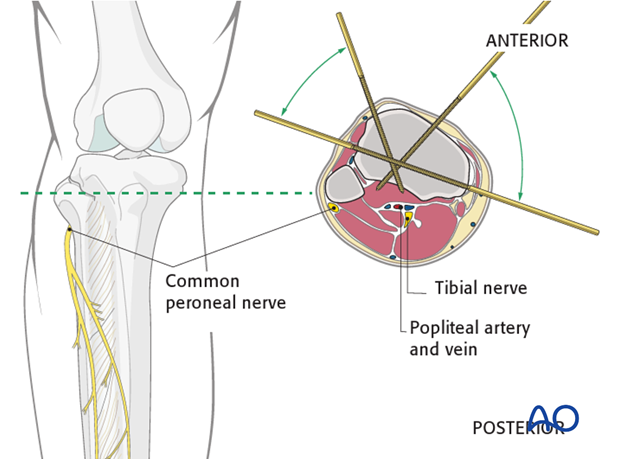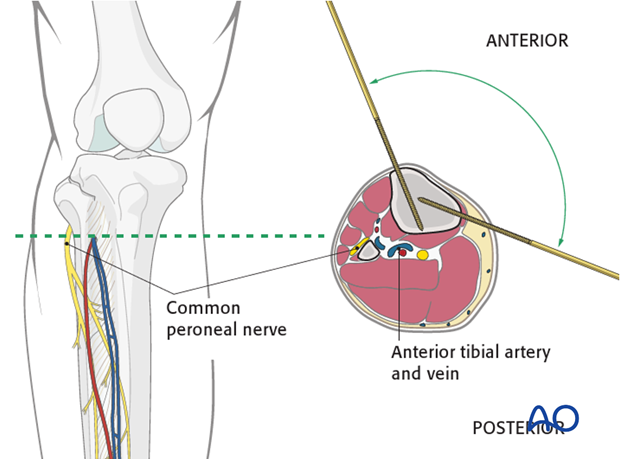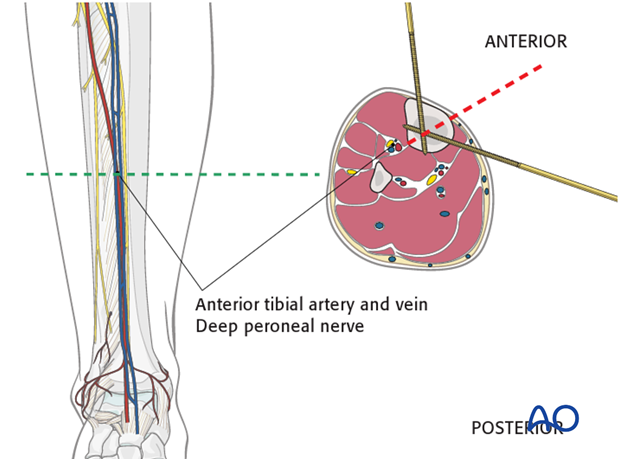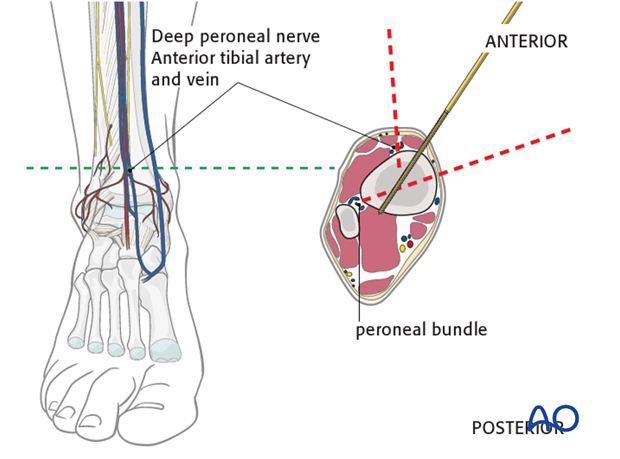Safe zones in the tibia for pin insertion
1. General consideration
Inserting percutaneous instrumentation through safe zones reduces the risk of damage to neurovascular structures.
2. Proximal part of the proximal tibia
The peroneal nerve runs posteriorly at the level of the fibular head and curves anteriorly as it goes caudal.
Transfixation
The medial and the lateral zones at the level of and ventral to the fibular head are the only safe zones for tibial transfixation.
Unilateral fixation
The anterior zone on both sides of the patellar ligament is safe for unilateral fixation.

3. Proximal third – distal of the tibial tuberosity
Distal to the tibial tuberosity only unilateral external fixation is safe.
It is best to insert the pins where soft-tissue coverage is minimal as the risk of pin track infection is lowest.

4. Middle zone of the tibia
The neurovascular bundle with the anterior tibial artery and vein together with the deep peroneal nerve are running close to the posterolateral border of the tibia.
They are at risk if the pin is inserted in the way indicated by the red dotted line.

5. Distal zone of the tibia
When inserting pins in the distal zone take into account the position of the anterior tibial artery and vein. Percutaneous insertion of pins in this area is dangerous. A minimal incision will allow preparation and safe insertion.
The peroneal bundle is located very close to the posterolateral border of the tibia and therefore at risk if pins are inserted in this direction.
Pins at this level should be inserted as shown in the illustration from anteromedial to posterolateral. A second pin can be inserted from medial to anterolateral, ventral to the fibula.














